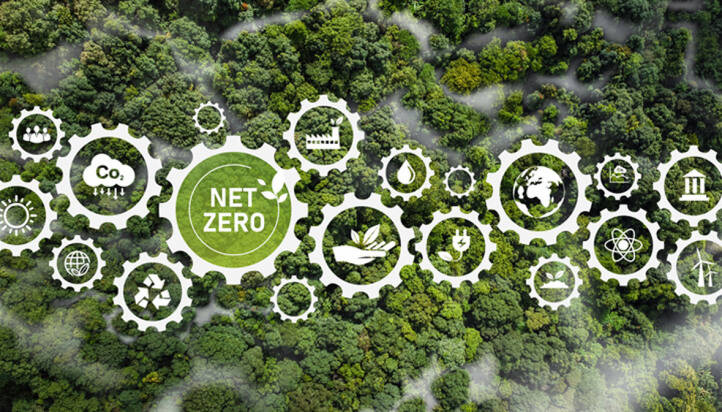What is the difference in these two terms and what will be required in the new Greenhouse Gas Emissions standard ISO 14068? A great little article by our Senior Net Zero and Sustainability Consultant, Elinor Kershaw, that explains both.

PAS 2060, a Publicly Available Specification that has been used as a guideline for demonstrating carbon neutrality, makes it clear that carbon neutral should be used to mean all scopes not just scope 1 & 2 (fuels burned on site and in vehicles and electricity consumption). However there has been a growing habit over recent years to use “carbon neutral” to mean just operational emissions – ignoring the value chain (scope 3) even though for most companies between 70 and 95% of their emissions are from the value chain.
To be truly carbon neutral, a company needs to reduce emissions from all sources as much as possible and then offset or actively remove the remainder.
Net Zero uses the same concept but at a larger scale, aiming for emissions from all sources to be reduced as much as possible and the remainder mitigated through removals from the atmosphere. These could be through supporting natural systems which sequester carbon (forest, peat, wetlands, seagrass, etc) or through technology like carbon capture and storage and buried solid carbon sinks.
The ISO 14068 standard will be a certifiable standard that ensures that emissions from all scopes are considered. (Click here to request a link to a recording of our ISO 14068 webinar or a copy of a factsheet.)
As time goes on, we need to be more cautious about avoided emissions (like technology sharing to reduce dependence on wood burning for example) as that prevents emissions that would otherwise have happened but doesn’t actively remove anything. So, it’s more like moving a share of emissions from one emitter to another, but on a global scale we need to be keeping total emissions to a minimum not just reducing in one place and emitting in another. It’s really important to support low carbon international development, but I think we’ll see a change in attitude to the value of avoided emissions in offsetting in future. A simple 2 tonnes avoided per 1 tonne allocated offset credit (for avoided emissions projects only) would work for example, as for every tonne emitted in location A, 2 tonnes are prevented in location B ensuring the overall emissions are net zero.
In short, a company that is carbon neutral is also net zero (calculated on a year-by-year basis), as in both cases the tracking of carbon emissions and removals need to match.
Please get in touch if you would like to discuss any aspect of Net Zero with one of our experts – email info@jrpsolutions.com or call 0800 6127 567.
N.B. The information contained in this entry is provided by the above supplier, and does not necessarily reflect the views and opinions of the publisher


